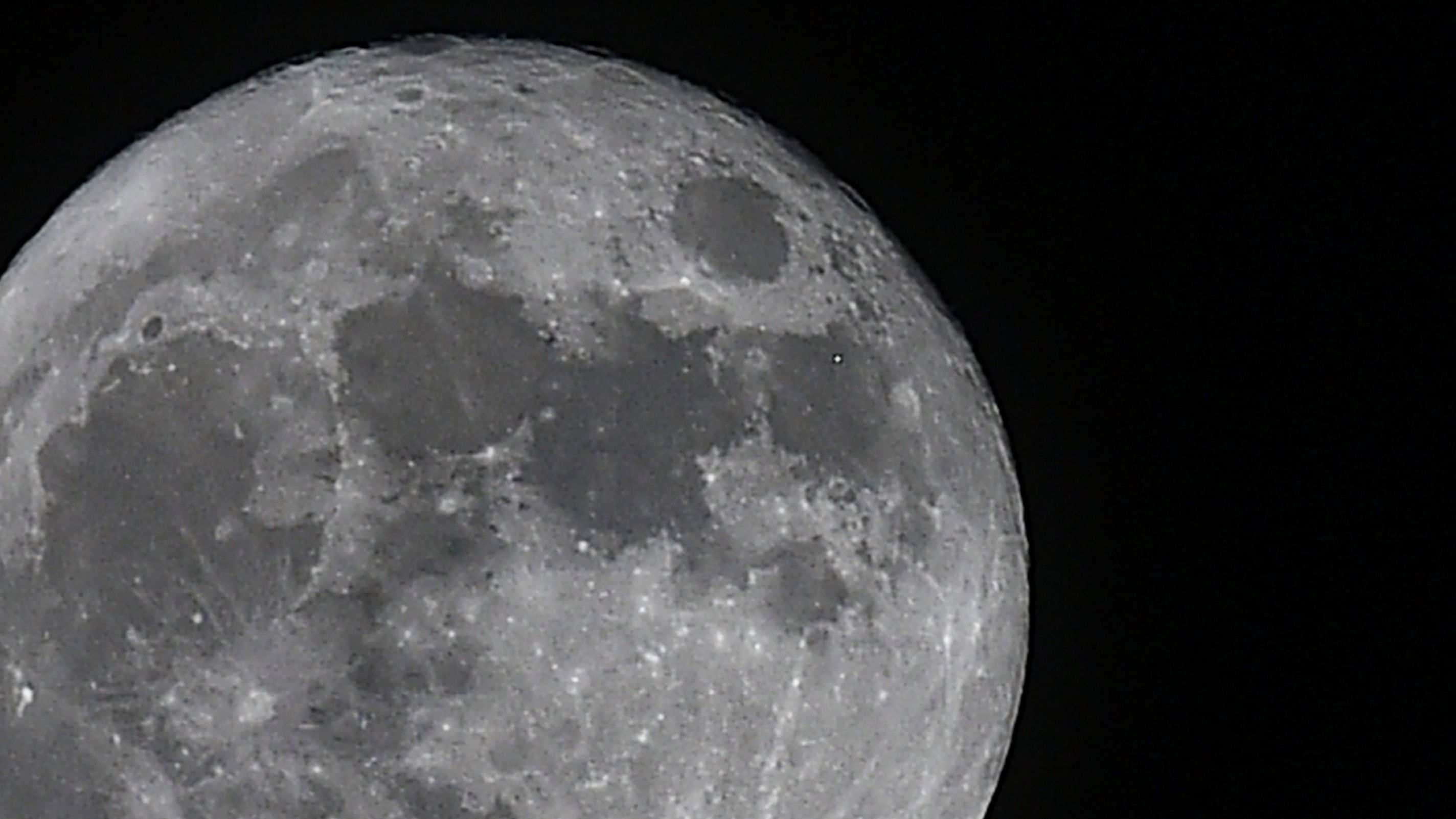
Representative image of the Moon.
Credit: PTI Photo
Almost a month after China's Chang'e-6 lander collected and brought samples from the other side of the moon, the scientists in the country claimed to have discovered water molecules in lunar soil for the first time.
As per a report in Interesting Engineering, the research was conducted by scientists from the Institute of Physics of the Chinese Academy of Sciences (CAS). The experts here claimed that the unidentified mineral crystal is rich in water and ammonia molecules— with the formula (NH4, K, Cs, Rb)MgCl3-6H2O, and is called unknown lunar mineral (ULM-1).
ULM's molecular formula includes as many as six crystalline waters, with water molecules making up to 41 percent of the sample by mass.
The team from CAS further reported that they found a hydrated mineral “enriched” with molecular water in lunar soil samples brought back by China’s Chang’e-5 mission in 2020.
The mineral’s structure and composition closely resemble novograblenovite— a terrestrial fumarole mineral formed through the reaction of hot basalt with water-rich volcanic gases, and carnallite, which is an Earth evaporite mineral.
“We rule out terrestrial contamination or rocket exhaust as the origin of this hydrate on the basis of its chemical and isotopic compositions and formation conditions,” the scientists said.
The scientists explained, “Our findings also suggest that water molecules can persist in sunlit areas of the moon as hydrated salts, providing crucial constraints on the fugacity of water and ammonia vapour in lunar volcanic gases.”
In 2009, Indian Space Research Organisation's (ISRO) Chandrayaan-1 detected signs of hydrated minerals, such as oxygen and hydrogen molecules, in sunlit areas of the Moon. NASA in 2020 announced the discovery of water on the same surface. This discovery was based on data from the airborne Stratospheric Observatory for Infrared Astronomy, which detected water molecules in the Clavius crater.
The Clavius crater is one of the largest craters visible from Earth in the Moon’s southern hemisphere. But, the absence of returned lunar samples from high latitude and polar regions mean that “neither the origin nor the actual chemical form of lunar hydrogen has been determined,” as per a paper in Nature Astronomy journal.